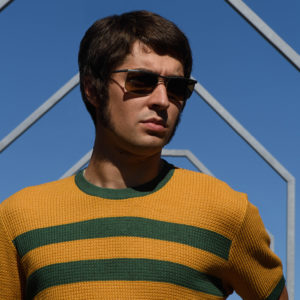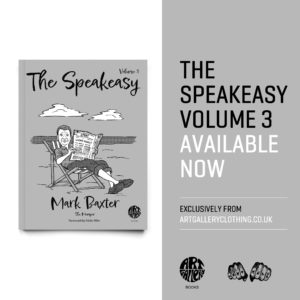
One of my various jobs in the past twenty odd years, was working as the PR/Social Media manager for Bar Italia on Frith Street, in London’s Soho. As dream jobs go, this was one was up there. Great heritage, history and of course, loads of interesting people to make the acquaintance of during the working week. The place was simply full of stories, like the time film director Francis Ford Coppola was in town working on a project. Whilst staying near Soho, he would arrive very early each day for a belt of the secret blend of coffee they serve there, to get his motor running. The owner and staff got very friendly with him and when he was due to leave to go back to the States, he promised them when he was next in London, he would drop in a bottle of vino from his own Francis Ford Coppola Winery. And this he duly did a few months later. ‘A gent’ was the common consensus on the man.
Of course, he is synonymous with cinematic excellence, as a film director, producer, and screenwriter. With an illustrious career spanning over five decades, Coppola has left an indelible mark on the industry. From epic dramas to thought-provoking character studies, his films have captivated audiences with their rich narratives, striking visuals, and profound themes. In this particular Speakeasy, I’ll delve into the life and works of the man exploring his creative genius and the enduring legacy he has built.
He was born on April 7, 1939, in Detroit, Michigan and grew up in a creative family, where he was exposed to storytelling from an early age. His mother’s name was Italia, and his father was Carmine. Dad played the flute in the Detroit symphony orchestra, among others. The family, including his sister, the actress Talia Shire, and brother August, settled in New York City, in Queens and Long Island. Bed-ridden from catching Polio aged nine, Francis began experimenting with puppet theatre, before moving onto 8mm films. He later earned a B.A. in drama in 1960, from Hofstra University, where he had studied from 1955, before later working towards a master’s at UCLA, where he studied filmmaking. His early projects included a stint working as an assistant to Roger Corman in the independent sector, from which he directed his first film in 1963, called, after a nine-day shoot, Dementia 13.
That year he married Eleanor Jessie Neil and they went on to have three children. Gian Carlo, Roman and Sofia. The actor Nicolas Cage is Coppola’s nephew, the son of August.
His next film You’re a Big Boy Now came in 1966. This put him on the radar of Warner Brothers and resulted in him directing Finians Rainbow in 1968, which starred Petula Clark and Fred Astaire. Next came The Rain People in 1969. With neither setting the film world alight, Warner’s severed their ties. However, it was not all bad news, as Coppola picked up an Oscar for his work on the screenplay for the film Patton in 1970.
‘I wrote the script of Patton. And the script was very controversial when I wrote it, because they thought it was so stylised. It was supposed to be like, sort of, you know, The Longest Day and my script of Patton was—I was sort of interested in the reincarnation. And I had this very bizarre opening where he stands up in front of an American flag and gives this speech. Ultimately, I wasn’t fired, but I was fired, meaning that when the script was done, they said, “Okay, thank you very much,” and they went and hired another writer, and that script was forgotten. And I remember very vividly this long, kind of being raked over the coals for this opening scene.’
The situation was rectified by the actor George C. Scott who played Patton in the film. He said he’d only make the film if they used Coppola’s script.
‘Scott is the one who resurrected my version.’
Due to the success of Patton, he found himself at the forefront of a group of fellow directors, who were dubbed ‘New Hollywood,’ and featured among them, Steven Spielberg, Brian de Palma, Woody Allen, Martin Scorsese, Robert Altman and George Lucas.
Coppola’s major breakthrough came in 1972 when he directed The Godfather, a three-hour adaption of the novel of the same name by Mario Puzo. At first reluctant to take the job on, he was finally persuaded by friends and family, to say yes to the project. This cinematic masterpiece which examined the Corleone family, rightly earned him critical acclaim, and earned Marlon Brando, as Vito, the head of the family, an Oscar, whilst Puzo and Coppola also won for best adapted screenplay.
‘The Godfather was a very unappreciated movie when we were making it. They were very unhappy with it. They didn’t like the cast. They didn’t like the way I was shooting it. I was always on the verge of getting fired. So, it was an extremely nightmarish experience. I had two little kids, and the third one was born during that. We lived in a little apartment, and I was basically frightened that they didn’t like it. They had as much as said that, so when it was all over, I wasn’t at all confident that it was going to be successful, and that I’d ever get another job.’
There was an immediate clamour for a sequel and that arrived in 1974 with The Godfather : Part II, which many consider a better film than Part I. Certainly the Academy agreed, as Coppola picked up the Oscar for best director and Robert De Niro, as young Vito, won for Best Supporting Actor. The directors father Carmine also won an Oscar for the films score.
One of the defining aspects of Coppola’s filmmaking is his unwavering commitment to his artistic vision. He is known for his meticulous attention to detail, his ability to create immersive worlds, and his dedication to telling stories that resonate with audiences on a profound level. His films often explore themes of power, morality, family, and the human condition, delving deep into the complexities of the human psyche.
An example of that, was his next project, Apocalypse Now from 1979. This was his exploration of the Vietnam War, using Joseph Conrad’s Heart of Darkness transplanted to Cambodia as inspiration Shot on location in the Philippines, the production was beset with immense challenges, including typhoons and earthquakes and the star of the film, Martin Sheen suffering a near fatal heart attack . Added to that, the considerable delays – with the film nicknamed Apocalypse When? as they over ran the budget by $20 Million dollars, with a vast portion of that having to be covered by Coppola personally. The film when complete and despite all its problems, did well at the box office and today, is considered a partially flawed masterpiece.
‘We were in the jungle, there were too many of us, we had access to too much money, too much equipment and little by little, we went insane.’
In 1980, Coppola set up Zoetrope Studios, as a way to compete with his major studio competitors, but the expensive failure of its first film One from the Heart quickly brought that enterprise to a halt, though he continued his production activities from home in San Francisco.
Some of his other notable work, includes American Graffiti in 1973 – in the role of producer – The Conversation starring Gene Hackman and The Great Gatsby – screenplay – both from 1974, Rumblefish and The Outsiders in 1983, both of which introduced the cinema audience to the likes of Matt Dillon, Mickey Rourke, Rob Lowe, Tom Cruise, Patrick Swayze and Diane Lane among others.
Then there is The Cotton Club starring our very own Bob Hoskins alongside Richard Gere in 1984. 1986 saw Peggy Sue Got Married and 1988 gave us Tucker: The Man and his Dream. Two years later in 1990, The Godfather : Part III, finally saw the light of day. Overall, it was considered somewhat of a disappointment, when compared with the previous two films in the series, though it did very well at the box office, tripling its approximate $50 Million budget. This was followed by Bram Stoker’s Dracula in 1992, starring Gary Oldman, Antony Hopkins, Winona Ryder and Keanu Reeves This again did remarkably well at the box office, becoming the ninth highest grossing film worldwide that year.
Francis was involved in numerous legal battles with film studios in the years that followed, saying this in 2015
‘That’s why I ended my career: I decided I didn’t want to make what you could call ‘factory movies’ anymore. I would rather just experiment with the form, and see what I could do, and [make things] that came out of my own experiences. And little by little, the commercial film industry went into the superhero business, and everything was on such a scale. The budgets were so big, because they wanted to make the big series of films where they could make two or three parts. I felt I was no longer interested enough to put in the extraordinary effort a film takes [nowadays]’
However, in April 2019, he announced plans to direct Megalopolis
‘I plan this year to begin my longstanding ambition to make a major work utilising all I have learned during my long career, beginning at age 16 doing theatre, and that will be an epic on a grand scale, which I’ve titled Megalopolis’ The story is said to revolve around the reconstruction of New York City in the aftermath of a huge disaster. Actors who have been attached to the project, are said to include Adam Driver, Jon Voight, Laurence Fishburne, Shia La Bouef and Dustin Hoffman among others.
So, despite undoubted successes, he has also faced numerous challenges throughout his career. Financial setbacks, production issues, and personal struggles have tested his resolve as a filmmaker. However, he has consistently persevered, allowing his passion for storytelling to guide him.
His overall influence on cinema of course, cannot be overstated. His films have inspired generations of filmmakers and continue to be studied and celebrated for their artistic brilliance. He has also played a significant role in championing independent cinema, nurturing new talent, and creating opportunities for emerging filmmakers to bring their stories to the screen.
A body of work and legacy, to be proud of, I think you’ll agree.
The Mumper of SE5
Read The Mumper’s other weekly musings on ‘The Speakeasy’ blog page
ART GALLERY CLOTHING
THE SPEAKEASY VOLUME 3 – AVAILABLE NOW
THE SPEAKEASY Volume Three by Mark Baxter (The Mumper)
Illustrations by Lewis Wharton
Foreword by Eddie Piller
Available to ORDER exclusively in the Art Gallery Clothing SHOP
JOIN US
Sign up to our newsletter and receive an exclusive promo code, latest news & Art Gallery Clothing offers.




